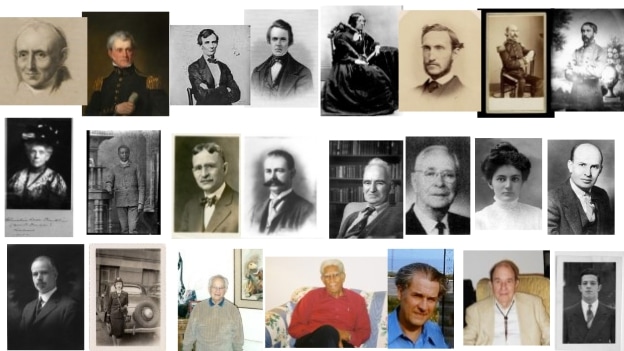- About MAA
- Membership
- MAA Publications
- Periodicals
- Blogs
- MAA Book Series
- MAA Press (an imprint of the AMS)
- MAA Notes
- MAA Reviews
- Mathematical Communication
- Information for Libraries
- Author Resources
- Advertise with MAA
- Meetings
- Competitions
- Programs
- Communities
- MAA Sections
- SIGMAA
- MAA Connect
- Students
- MAA Awards
- Awards Booklets
- Writing Awards
- Teaching Awards
- Service Awards
- Research Awards
- Lecture Awards
- Putnam Competition Individual and Team Winners
- D. E. Shaw Group AMC 8 Awards & Certificates
- Maryam Mirzakhani AMC 10 A Awards & Certificates
- Two Sigma AMC 10 B Awards & Certificates
- Jane Street AMC 12 A Awards & Certificates
- Akamai AMC 12 B Awards & Certificates
- High School Teachers
- News
You are here
Building a Book: HathiTrust, Ancestry.com, Serendipity, and Lifetime Interests – Conclusion
As I plumbed my memory and family history, delved into online resources such as HathiTrust and Ancestry.com, and incorporated serendipitous discoveries, I gradually constructed my idiosyncratic portrait of American mathematics in the twenty chapters of Republic of Numbers. Despite the surmise of one reviewer, these chapters were not written with the aim of championing “social justice.” But as I have suggested throughout this article, I did endeavor, within the limits of my chosen literary form, to portray my protagonists in the full context of their times, mathematical and otherwise.
The preceding pages thus illustrate several practices in historical research and writing that have classroom applications. In the course I taught, the biographies served as sources of historical information, and giving my students a glimpse into the process of assembling this information provided inspiration for their own explorations. Students had opportunities for hands-on experiences both with fact-checking and correcting secondary sources and with comparing primary sources (primarily textbooks, in this case) against each other to observe changes in knowledge and values across time and space.
The storytelling structure utilized in each Republic of Numbers vignette may provide instructors with a framework for designing multi-week student research projects. This article itself can be used to help students understand that, just as mathematics teaching methods and technologies evolve, the methods and technologies available to researchers are also subject to historical change. Digitized libraries and tools for genealogy have especially transformed where and how historians gather information as well as what types of information they are able to unearth. Dear readers, the intriguing humans behind many more unexpected mathematical stories are waiting on the internet and in physical libraries to make your acquaintance.

Figure 24. Collage of individuals covered in Republic of Numbers, by David Lindsay Roberts.
David Lindsay Roberts (Prince George’s Community College), "Building a Book: HathiTrust, Ancestry.com, Serendipity, and Lifetime Interests – Conclusion," Convergence (January 2022)




